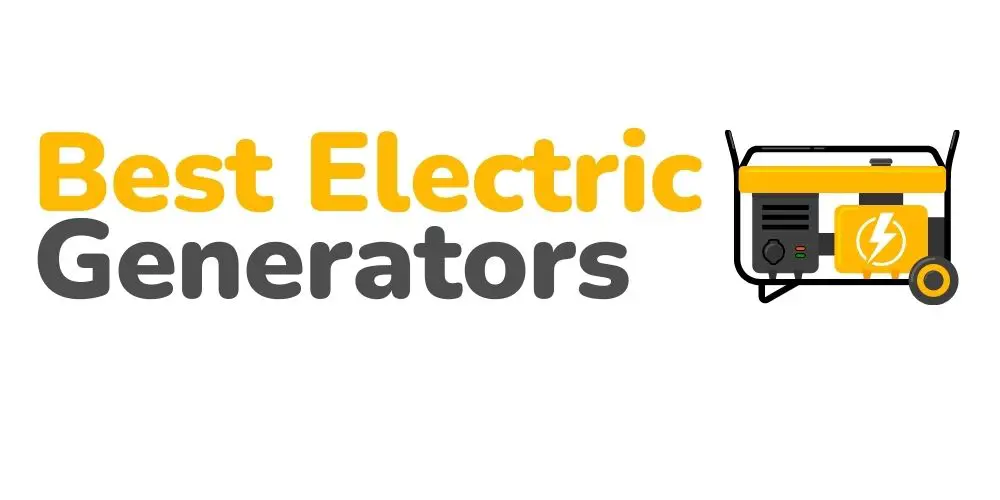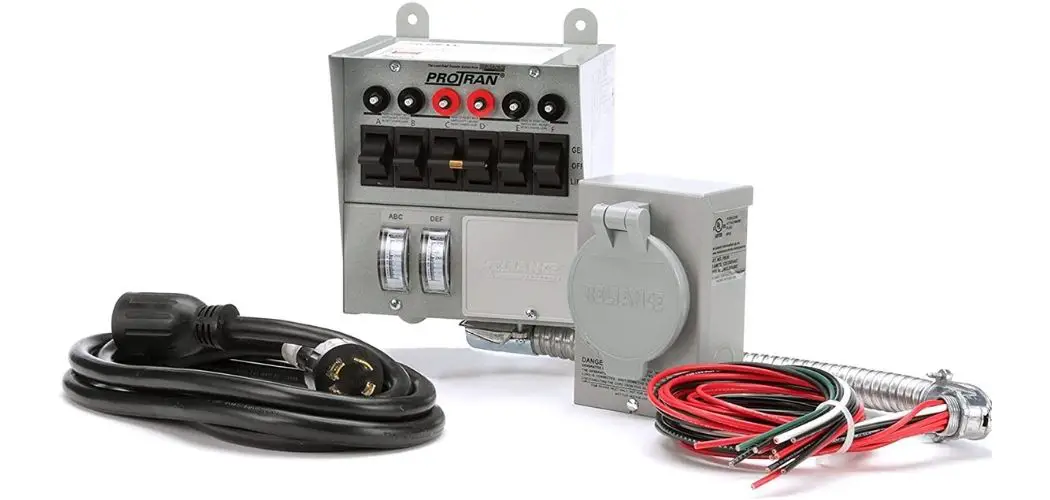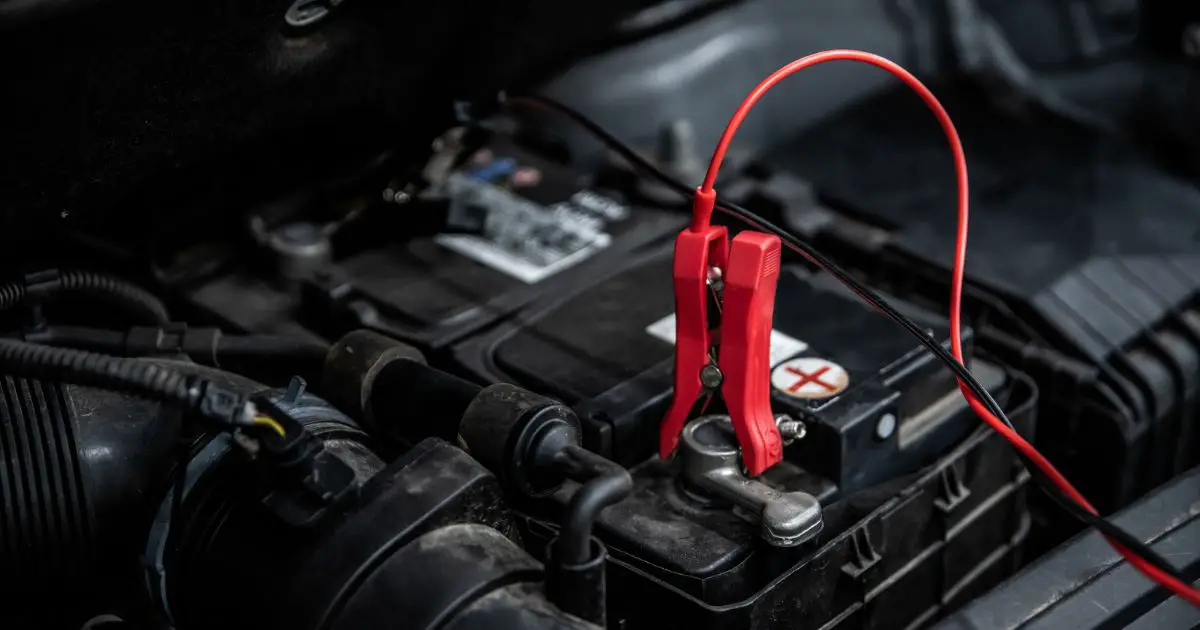Buying a portable generator is just the beginning. You’ll need a lot more with that generator, including a transfer switch. But what is a transfer switch for when using a portable generator?
Transfer switches make it smoother and safer to transition from the grid to your generator. They ensure your building is never connected to the generator and the grid at the same time. And in some jurisdictions, they are legally required, especially on generators exceeding 5,000 watts.
But do you need one in your generator? And how hard will the installation be? Finally, and most importantly, how do you buy one?
Read on to find out.
How Does a Transfer Switch Work for A Portable Generator?
A transfer switch is a simple electrical device that transfers the grid to your generator seamlessly and safely. It works by providing a seamless transition from the grid to the generator when the grid is off.
Your house either needs power from the grid or a generator, but not both at the same time. To ensure this doesn’t happen and ensure maximum user safety, you require a transfer switch.
When you turn the generator on, the transfer switch conveniently switches the load from the grid to the generator.
What Generators Need a Transfer Switch?
A transfer switch is a good idea on a standby generator. Since the entire point of the standby generator is to provide power when the grid is off, a transfer switch is always mandatory.
Without it, the transition from the grid to the generator won’t be as smooth. However, much like with the standby generator, it makes transitioning to the generator a whole lot easier.
Plus, the transfer switch is connected to the circuit breaker panel; you won’t have to connect your devices to the generator. Instead, leave them as they are, and you’re good to go.
Legally speaking, a transfer switch is almost on any generator above 5,000 watts. This is because higher power can back feed the grid, which can be dangerous for you and any workers working on the line. Of course, each jurisdiction has its own rules regarding this. But in most cases, it’s always a good idea to install a transfer switch on powerful generators.
How To Choose the Right Transfer Switch?
So, how do you go about buying one? Here’s all you need to know about how to choose the right transfer switch:
1. Manual vs. Automatic:
First, decide if you want a manual or an automatic transfer switch. Manual transfer switches require someone to turn them on, whereas automatic switches don’t.
Automatic switches are viral among higher-power standby generators. And manual switches are for portable generators that don’t have a lot of power demand.
2. Amperage:
Next, consider the continuous current rating. This is how much current the transfer switch can handle. After all, too much current will damage the transfer switch. Now, the amperage rating should match that of your main circuit breaker.
Hence, if your circuit breaker has a rating of 150 amps, your transfer switch should have the same. Usually, the rating ranges from 30 to 400 amps.
3. Systems and Circuits:
After that, consider how many circuits you want to power with the transfer switch. Some switches have separate switches for each outlet. In addition, you may find transfer switches based on the number of circuits they supply, such as 6 and 10-circuit switches.
Remember that most automatic transfer switches won’t give you much liberty on what circuits get powered on. This is one of those reasons why you should opt for a manual switch. Manual transfer switches let you decide which systems remain on during a power outage.
4. Operation:
Finally, consider how the switch operates. There are four types of switches in this regard:
Open Transition: In this type, the switch must disconnect the circuits when transitioning from grid to generator. This creates a slight interruption in power.
Fast Closed-Transition: These don’t have any interruption. They provide continuous power by connecting the sources in parallel.
Soft Closed-Transition: These work by syncing up the sources using a ramp load impulse. They also don’t have any interruptions.
Sub-Cycle Transfer: These have a smaller interruption as the switching occurs in only a quarter of the cycle.
Risks of Not Using a Transfer Switch:
A transfer switch seems like a luxury to most people. So, why should you invest in one? Besides the convenience, there are also a few safety reasons why you should use a transfer switch. And the most significant safety concern is back-feeding the grid.
You see, when your generator is connected to your devices, the grid should stay off. So, likewise, when the grid is powering your house, your generator should stay off.
If, however, for some reason, both the generator and the grid switch on, then you could face serious health issues. Two currents feeding into the house will cause a current surge. This will, at the very least, fry your electronics.
And at the very worst, it could lead to house fires and severe fires. More so, it could put utility workers working on the line at risk when the power comes back on. In extreme but not uncommon cases, there could be fatalities.
But there is one thing to remember here: only regarding standby generators wired to the circuit breaker panel.
If you have a few connected devices directly into your portable generator, this isn’t an issue. Likewise, if the generator isn’t connected to the grid, you don’t need to worry about this.
Types of Transfer Switches:
Transfer switches can be divided into two subcategories: manual and automatic.
Automatic transfer switches are always on. They connect your house to the generator as soon as the grid goes off.
And as the grid comes back on, they disconnect from the generator without putting anyone at risk. The transition is seamless. You’ll usually find these on standby generators installed in industries and big hotels, where continuous power is crucial.
As for manual transfer switches, someone must manually come to turn the switch on. Once on, it connects the house to the generator. And when the grid comes back on, it seamlessly and safely disconnects from the generator.
These switches are common in portable generators, where you need someone to turn the generator on anyway.
Installing A Transfer Switch:
Now that you know that you need a transfer switch, it’s time to install one. Unfortunately, unless you’re a licensed professional, do not attempt this on your own. This is because you’ll be dealing with the power grid, which can be very dangerous. Plus, you need a permit to undertake such responsibilities. It’s best to have a professional install the transfer switch for you.
What is the best transfer switch for the generator?
If it had to be one, it would be the Generac RXSW200A3 200-amp Smart Transfers Switch. It’s an automatic transfer switch with a rating of 200A and 120/240V.
What makes it so unique is the easy installation as well as the intelligent power management.
Is a transfer switch required?
Legally speaking, the requirement depends upon the jurisdiction. Each country and state has its law, so it’s best to search for electrical laws in your area.
Generally, it’s a good idea to get a transfer switch on standby generators, especially those that exceed 5,000 watts. This will protect both you and line workers, as well as your house.
Should you get a manual or automatic transfer switch?
Automatic transfer switches make switching a lot easier. However, the one requirement is that the generator must stay on all the time. Unless you’re using a standby generator, this is not possible on portable generators.
For portable generators, a manual transfer switch is a much better choice. Plus, it allows you to decide which circuits stay on and which stay off. In addition, these transfer switches do not require the generator to stay on all the time.
How do I use a transfer switch?
Automatic transfer switches require no manual work, as is implied by the name. For manual transfer switches, you’ll need to switch them from line to generator and vice versa when the power comes back on. You can also use the various outlet switches to turn on only specific circuits.
How long does it take to install a generator transfer switch?
Due to the sensitive nature of the task, installation of a transfer switch can take up to 4 hours. However, it’s common for such procedures to take, upon average 2 hours.
Conclusion
Most people get a generator and think that’s it. But unfortunately, home improvement isn’t that easy. One of the most important components you’ll need with your generator is the transfer switch.
So, how does a transfer switch work with a portable generator? Transfer switches make it smoother and safer to transition from the grid to the generator.
In addition, they ensure the building never receives power from both the grid and the generator at the same time.
But are they required? Legally, it depends upon your jurisdiction. But mostly, they are required on generators exceeding 5,000 watts.
Now waste no time and get a transfer switch installed. It pays to be safe!


